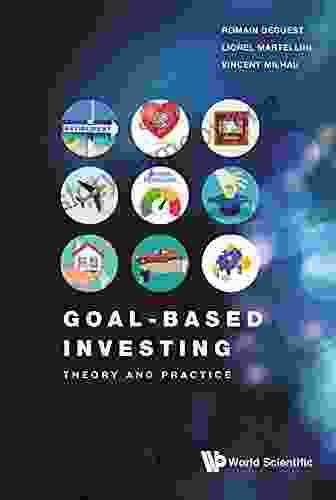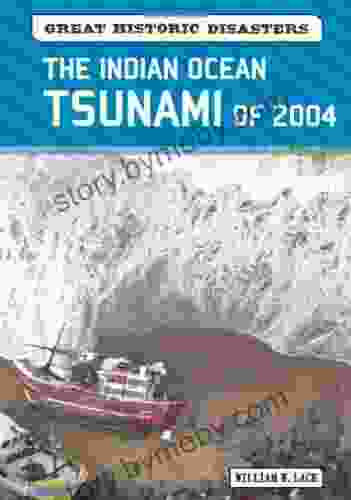The Indian Ocean Tsunami of 2004: A Devastating Natural Disaster

On December 26, 2004, a massive earthquake off the coast of Sumatra, Indonesia, triggered a series of devastating tsunamis that swept across the Indian Ocean, causing widespread destruction and loss of life. The earthquake, with a magnitude of 9.1, was one of the largest ever recorded, and the resulting tsunamis reached heights of up to 30 meters (100 feet) in some areas. The disaster claimed the lives of over 230,000 people and affected millions more, leaving a trail of devastation across coastal communities in Indonesia, Sri Lanka, India, Thailand, and other countries.
5 out of 5
| Language | : | English |
| File size | : | 4644 KB |
| Text-to-Speech | : | Enabled |
| Screen Reader | : | Supported |
| Word Wise | : | Enabled |
| Print length | : | 127 pages |
Causes of the Tsunami
The Indian Ocean tsunami of 2004 was caused by a massive undersea earthquake that occurred along the Sunda Megathrust, a fault line between the Burma Plate and the Indian Plate. The earthquake caused the seafloor to rupture, displacing a large volume of water and generating a series of tsunamis. These tsunamis traveled across the Indian Ocean at speeds of up to 800 kilometers per hour (500 miles per hour),reaching coastal areas within minutes of the earthquake.
Impacts of the Tsunami
The tsunamis caused widespread devastation in coastal areas, destroying homes, businesses, and infrastructure. The waves swept away entire villages, leaving behind scenes of utter destruction. In some areas, the tsunamis penetrated inland for several kilometers, causing extensive flooding and damage. The death toll from the disaster was staggering, with over 230,000 people confirmed dead. Millions more were injured, displaced, or lost their livelihoods.
Response to the Disaster
The Indian Ocean tsunami of 2004 triggered an immediate and massive international response. Relief organizations from around the world rushed to provide aid to the affected areas, delivering food, water, medical supplies, and shelter. Governments and international organizations also provided financial assistance and support for reconstruction efforts.
In the long term, the disaster led to a reassessment of disaster preparedness and risk reduction measures in coastal areas. Governments and organizations invested in early warning systems, evacuation plans, and disaster education programs. The disaster also raised awareness about the importance of community resilience and the need for sustainable development in disaster-prone areas.
The Indian Ocean tsunami of 2004 was a devastating natural disaster that had a profound impact on coastal communities across the Indian Ocean region. The disaster claimed the lives of over 230,000 people and caused widespread destruction and suffering. However, it also led to a renewed focus on disaster preparedness and risk reduction, and to a greater understanding of the importance of community resilience. The lessons learned from this tragedy have helped to improve disaster management practices and save lives in future events.
Remember, natural disasters can strike anywhere, anytime. It is important to be aware of the risks in your area and to have a plan in place in case of an emergency. Visit the websites of your local emergency management agency and the National Weather Service for more information.
5 out of 5
| Language | : | English |
| File size | : | 4644 KB |
| Text-to-Speech | : | Enabled |
| Screen Reader | : | Supported |
| Word Wise | : | Enabled |
| Print length | : | 127 pages |
Do you want to contribute by writing guest posts on this blog?
Please contact us and send us a resume of previous articles that you have written.
 Book
Book Novel
Novel Page
Page Chapter
Chapter Text
Text Story
Story Genre
Genre Reader
Reader Library
Library Paperback
Paperback E-book
E-book Magazine
Magazine Newspaper
Newspaper Paragraph
Paragraph Sentence
Sentence Bookmark
Bookmark Shelf
Shelf Glossary
Glossary Bibliography
Bibliography Foreword
Foreword Preface
Preface Synopsis
Synopsis Annotation
Annotation Footnote
Footnote Manuscript
Manuscript Scroll
Scroll Codex
Codex Tome
Tome Bestseller
Bestseller Classics
Classics Library card
Library card Narrative
Narrative Biography
Biography Autobiography
Autobiography Memoir
Memoir Reference
Reference Encyclopedia
Encyclopedia Laverne Mordella
Laverne Mordella Linda Lajterman
Linda Lajterman Kirsten K Shockey
Kirsten K Shockey Lawrence Turman
Lawrence Turman Kris Rivenburgh
Kris Rivenburgh Laurie Halse Anderson
Laurie Halse Anderson Kitty Pilgrim
Kitty Pilgrim Lavanya Karthik
Lavanya Karthik Frank Richmond
Frank Richmond Peter Newell
Peter Newell Lannah Sawers Diggins
Lannah Sawers Diggins Kristen Britain
Kristen Britain Laurie Chaikind Mcnulty Lcsw C
Laurie Chaikind Mcnulty Lcsw C Laurie Lee
Laurie Lee Lindsey R Swindall
Lindsey R Swindall Will Durant
Will Durant Lafcadio Hearn
Lafcadio Hearn Thomas A Crowell
Thomas A Crowell Kindle Interactive Edition
Kindle Interactive Edition Narda Zacchino
Narda Zacchino
Light bulbAdvertise smarter! Our strategic ad space ensures maximum exposure. Reserve your spot today!

 Jedidiah HayesThe Professor's Handbook: Unlock Your Writing Potential and Achieve Academic...
Jedidiah HayesThe Professor's Handbook: Unlock Your Writing Potential and Achieve Academic...
 Simon MitchellPersonal Memoir of My Years at Lockheed: An Extraordinary Journey into the...
Simon MitchellPersonal Memoir of My Years at Lockheed: An Extraordinary Journey into the... Ralph Waldo EmersonFollow ·15.9k
Ralph Waldo EmersonFollow ·15.9k Jared PowellFollow ·8.2k
Jared PowellFollow ·8.2k Jerome BlairFollow ·2.2k
Jerome BlairFollow ·2.2k Anthony WellsFollow ·5.1k
Anthony WellsFollow ·5.1k Philip BellFollow ·18k
Philip BellFollow ·18k Thomas HardyFollow ·4.3k
Thomas HardyFollow ·4.3k Liam WardFollow ·10.1k
Liam WardFollow ·10.1k Sammy PowellFollow ·13.3k
Sammy PowellFollow ·13.3k

 Forrest Reed
Forrest ReedHockey Grit, Grind, Mind: The Ultimate Guide to Mental...
Hockey is a tough...

 Juan Rulfo
Juan RulfoUnlock Your Inner Artist: Embark on a Sketching Journey...
Embrace the Beauty of Nature Through Quick...

 Nathaniel Hawthorne
Nathaniel HawthorneSo You Think You're a Philadelphia Phillies Fan?
The Philadelphia Phillies are one of the most...

 Jeff Foster
Jeff FosterGoal-Based Investing: A Comprehensive Guide to Achieving...
Investing is not...

 Aleksandr Pushkin
Aleksandr PushkinGNOMEDOM: The Future Unfolds (Gnomedom Tales 1)
Escape into the enchanting world of Gnomedom...

 Branden Simmons
Branden SimmonsInternal Factors And Training Concepts For All Internal...
Internal arts, such as Tai...
5 out of 5
| Language | : | English |
| File size | : | 4644 KB |
| Text-to-Speech | : | Enabled |
| Screen Reader | : | Supported |
| Word Wise | : | Enabled |
| Print length | : | 127 pages |








